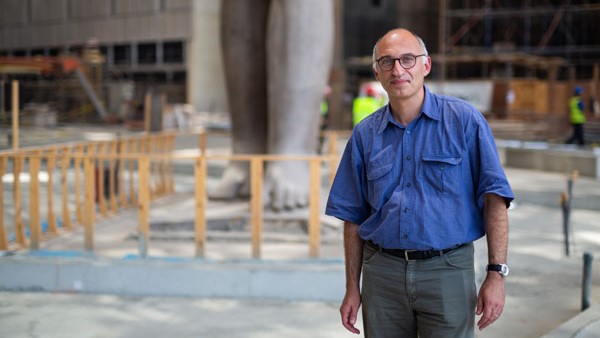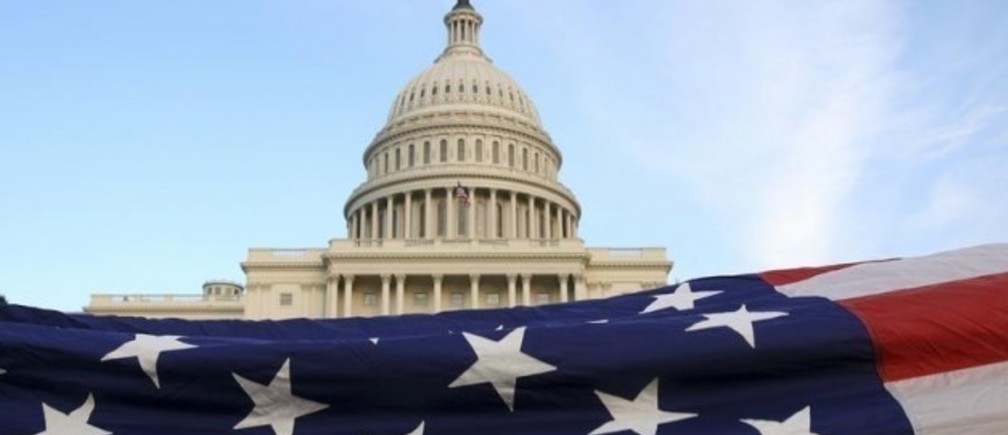Almost two decades ago, the government announced an ambitious plan for a 21st-century homage to the glories of millennia past, the Grand Egyptian Museum (GEM).
Since its announcement, the world has been in anticipation of what may be one of the most iconic contributions to the human heritage. The GEM is not merely a museum, it is designed to be an international cultural hub. Directly overlooking the Great Pyramids of Giza, the GEM’s planned lush landscape will offer a green lung to the congested area surrounding the pyramids.
To get a glimpse of the journey and magnitude of such a project, Business Monthly sat down for a one-on-one interview with the Director General of the GEM, Tarek Tawfiq.

How would you explain to our readers the grandeur of the museum?
It is the largest museum in the world that showcases one civilization. The museum has a very special flavor which makes it different from any other exhibition on our heritage in the world because it gives it a new identity.
This identity has three main facets: the emerging of the ancient Egyptian state; followed by kingship in ancient Egypt and the relationship between the people and their king throughout 5,000 years; and finally the quest for eternity, sharing their ideas about the second life after death.
This alone is a totally new approach. We are not focusing on art or architecture, we are utilizing all these artifacts to tell a story about the ancient Egyptian identity.
The museum has four main indoor spaces: the atrium, an enormous entrance space with the 40-meter-high statue of King Ramses the second; the grand staircase with 87 huge artifacts, which range from royal statues to architectural elements from tombs; the two galleries of King Tutankhamoun; and a huge space which is designed to take the visitor on a journey from pre-history until the Greco-Roman period in Egypt.
More than 45,000 artifacts will explain thousands of years of history, and for the first time in an ancient Egyptian exhibition, the visitor will be able to walk through history chronologically, in an area of approximately 27,000 square meters.

How many artifacts will the museum house?
The museum will include 100,000 artifacts, half of which will be on permanent display and the remaining 50,000 will be inaccessible storage for researchers and for temporary exhibitions.
The museum’s landscape includes 3,500 square meters designated for temporary exhibitions, allowing museum management to host themed display every few months. This is in addition to overseas exhibitions.
Speaking of researchers, what is the expected methodology to allow researchers access to stored artifacts?
Of course, in order to get the opportunity to do research on genuine, priceless artifacts, the researcher must have an affiliation to a respected and well-known research facility in the field of Egyptology.
For these specialists, the research will be much easier than in any other museum in Egypt, as we have implemented a system that records each piece, its details, and its precise location. This will allow us to make the piece available for the researcher within only one hour.
The duration of the research permit and the further details are yet to be determined; however, in general, research is being welcomed and supported.

There have been conflicting reports on the official launch date. Has one been set?
The whole building construction-wise will be finalized by the end of 2018, and the exhibition itself should be ready within the first quarter of 2019. However, given the crucial nature of choosing the right time to officially launch the GEM, the exact date is currently under discussion by four ministries: Antiquities, Tourism, Interior, and Foreign Affairs.
We need to ensure that we choose the most appropriate time weather-wise, that it is within the right tourism season, and that it fits with the schedules of the international high-level guests which includes presidents and kings that are awaited to attend the opening ceremony.
You were often quoted singling King Tutankhamoun as the jewel of the museum. What can you share about his exhibition?
For the first time in history the complete Tutankhamoun collection will be showcased. Previously only about 1,800 pieces were made available at the Egyptian Museum in Tahrir; however, all 5,000 pieces will be displayed at the GEM.
To date, 4,400 pieces have been transferred to the GEM so far, and the rest will remain on display at the Tahrir museum until one month before the launch, in order not to deprive visitors from them for too long. Fortunately, most of the remaining pieces are either gold or metal, and thus do not need much restoration work.
The exhibition of King Tutankhamoun can be considered as a case study, given that it is one of very few royal tombs that have been discovered nearly undisturbed. It provides a unique opportunity to have a somewhat accurate view of a royal burial and to reflect on the 18th dynasty, in which he lived and ruled. It gives a rare chance to see the king’s lifestyle: How would he dress, his sandals, his weapons, his jewelry, his chariots, going so far as his diet. We want to reveal the secrets about the man behind the gold mask.

What can you share about the construction delays and funding challenges faced?
In 2002 the architecture bureau was awarded the contract to create the museum’s design concept. This remains to be the largest competition ever in this field, with 1,577 entries from 83 countries. In 2005 the preparation for the location started; this phase included some major challenges as the museum is built on a sandy hill. We needed to remove huge amounts of sand, to allow the galleries to stand at such an angle that would be directly overlooking the Great Pyramids of Giza.
Other than its proximity to the pyramids and wonderful view, another asset of the chosen location is its sandy nature, which is proof the land is totally devoid of any monuments. Ancient Egyptians would never build pyramids, temples, or cut tombs into a sandy hill, they only constructed on stone plateaus. This allows us—as modern Egyptians—to build a new landmark in the Egyptian history.
By 2012 we were able to begin construction activity. I took over as general supervisor of the project in August 2014, at that time what was available was about an amount of $300 million, which was a loan provided to us generously by Japan with favorable conditions. However, due to the difficult political situation in Egypt at the time it would have been a burden to request the rest of the funding from the Egyptian state. As a result we began intensive negotiations with Japan, and after two years we were able to agree on a second loan of approximately $450 million.
The overall cost of the GEM stands around $1 billion, the remainder of which will be funded by the Egyptian government. Of course at the end, Egypt is shouldering this project alone, while the Japanese helped us realize this project, we have to repay their loans.
We have completed all the infrastructure and we are now working on the finishing. Preparation of the display comes next, which is a huge challenge that can only begin once we ensure that all spaces are dust-free. The showcases are already on their way to Egypt from Italy and Germany.

How has the floatation of the pound impacted your operations? And how long before the museum achieves BEP?
Fortunately, most of our contracts were done before the floatation, which allowed us to contain this issue quite well. Nevertheless, the devaluation of the pound had some impact, but it did not significantly affect the cost of the project. We are well within our estimates.
This project has a huge potential to break-even after the loans have been repaid, especially since the loans have quite a supportive grace period. Most probably the break-even point (BEP) point will be between 15 to 20 years, which is not much for such a huge project.
Funding and sponsorship for the museum will be important means to sustain operations at an international level.
In line with this issue, a tender has been launched for international companies to apply for the facility management of the museum complex. The contract will include management of all aspects of the project with the exception of the handling and restoration of the artifacts.

May I ask why was this part of the project outsourced as opposed to hiring an internal team?
This project includes a conference center, 28 shops, 10 restaurants, and a building that can be turned into a boutique hotel. All these activities are none-of the business of the management of the museum, moreover, there are management companies who know exactly how to profitably run such facilities. This revenue will, of course, help sustain this impressive cultural complex which will house a significant part of the humankind heritage.
Part of the job of the facility management company will be also to generate funding and there are some interesting possibilities that will be marketed allowing interested people to participate in the museum in a way that they can really see during their visits. For example, certain decorative elements on the facade of the museum, something similar to a walk of fame where the names of sponsors will be carved. The details of which are still under discussion.

Will the awarded company have the final say in all matters related to the facility or will there be an approval process from the museum management?
Of course, the museum management will give some guidelines and restrictions to ensure that the facilities provide the right service. For example, the shops will not include a supermarket and the restaurants must serve different categories of visitors.
In closing, what is your personal favorite piece at the museum?
The mask of King Tutankhamoun has its charm; however, there is another piece that has become very dear to me, the colossal statue of King Ramses the second. This statue really has the ability to take you into its band, it attracts you to stand in front of it and admire what the ancient Egyptians were able to produce over 3,500 years ago. You can see the precision in the measurements they were dealing with. The dimensions of King Ramses’ face have been carved in such a way that allows people standing at its feet to have the feeling that the proportions are all correct. To achieve that they needed to blow some of his features out of proportion, it is a true testament to the amount of knowledge that went into the creation of the statue.
Not only does gold shine, but the reflection of their knowledge shines even brighter.







